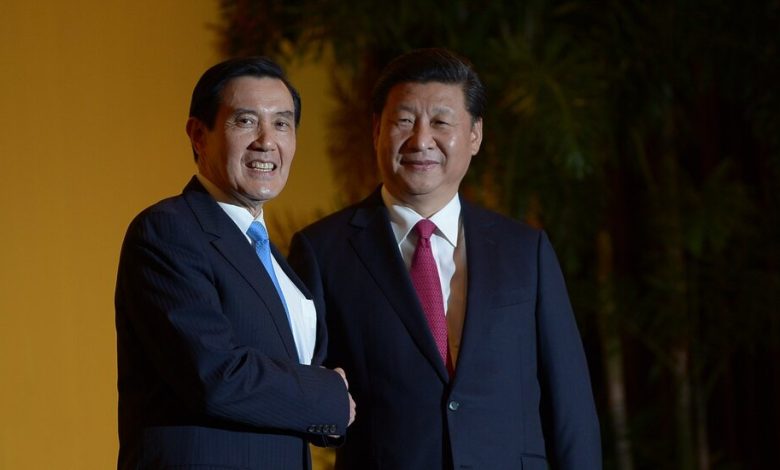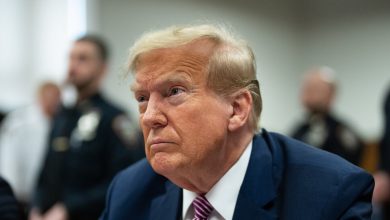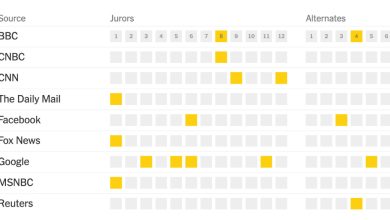Taiwan’s Ex-President Heads to China in Historic and Closely Watched Visit

TAIPEI, Taiwan — Taiwan’s former president, Ma Ying-jeou, will be setting off on Monday for the first visit to China by any sitting or former Taiwanese leader since China’s civil war ended with the Nationalist government retreating to the island from the mainland in 1949.
Though the 12-day visit by Mr. Ma, who was president from 2008 to 2016, is unofficial, it is likely to be watched closely at home and abroad for clues on how Beijing might seek to influence Taiwan, its democratic neighbor, ahead of a presidential election in January. The timing of Mr. Ma’s trip is also noteworthy because he departs just days before Taiwan’s current leader, President Tsai Ing-wen, visits the United States, a trip that has been met with objections by China, which claims Taiwan as its territory.
The contrasting destinations highlight what each politician’s party sees as its advantage. Ms. Tsai, of the Democratic Progressive Party, has strengthened U.S.-Taiwan ties during her eight years in office, while the Chinese Nationalist Party, or Kuomintang, to which Mr. Ma belongs, bills itself as better able to deal with Beijing.
President Tsai will leave Taiwan on Wednesday for a trip to Central America, with what officials have described as transit stops in the United States planned in New York and Los Angeles. Beijing has said it “strongly opposed” Ms. Tsai’s planned U.S. trip and any form of contact between the United States and Taiwan’s authorities. On Saturday, in a blow to Taipei’s international standing shortly before Ms. Tsai’s overseas trip, Honduras announced it was severing diplomatic ties with Taipei in favor of Beijing.
In China, news of Mr. Ma’s pending arrival drew praise from the Taiwan Affairs Office. The former president will bring a delegation of Taiwanese students to promote cross-strait educational exchanges, which took off during his presidency, but dwindled in recent years, both because of the pandemic and because of Beijing’s disapproval of Ms. Tsai. Mr. Ma, who declined to comment for this article, will also visit the graves of his ancestors in Hunan Province.
“Ma underlining his familial roots in China at the precise moment when Tsai is highlighting U.S.-Taiwan ties will provide very contrasting visuals, and influence Taiwanese voters’ perception of where Taiwan’s two main political parties stand on U.S.-China relations,” said Wen-Ti Sung, a political scientist at the Australian National University’s Taiwan Studies Program. “Having served as Taiwan’s president for eight years, his every move will carry political significance, whether he likes it or not.”
Beijing’s cultivation of Mr. Ma and the Kuomintang, once the mortal enemy of Mao Zedong’s Communists, is a concession that China must make to Taiwan’s democracy, Mr. Sung said.
“Beijing has learned from past experience that whenever it uses fire-and-fury rhetoric against Taiwan, that usually backfires, and helps to elect the very Taiwanese nationalist politicians who are unfavorable to Beijing,” Mr. Sung said. “So, instead, recently Beijing has been seeking to extend an olive branch towards Taiwan, and where possible to lend a hand to what it sees as the relatively Beijing-friendlier voices in Taiwan.”
Mr. Ma’s trip to China is the most recent high-profile interaction between China and Kuomintang officials.
In February, the newly elected mayor of Taipei, Chiang Wan-an, welcomed a delegation from the Shanghai branch of the Taiwan Affairs Office. Andrew Hsia, a Kuomintang vice chairman, went to China and met with Wang Huning and Song Tao, two key figures in Beijing’s Taiwan strategy.
The Kuomintang and its leader, Chiang Kai-shek, were driven off the mainland and to Taiwan in 1949 by the Communists in the war for control of China. In Taiwan, the Kuomintang imposed authoritarian rule and a Chinese identity on the island until 1987, when the government ended 38 years of martial law, opening the way for democracy and the re-emergence of Taiwanese identity.
Since then, relations between the Kuomintang in Taiwan and the Communists in China have warmed, with Mr. Ma at the forefront of the push for closer cross-strait ties.
In 2014, his efforts to bring Taiwan closer to China brought citizens out into the streets in protest, and a subsequent election swept Ms. Tsai and her D.P.P. into power in the executive and legislative branches. In 2015, Mr. Ma faced criticism at home for his decision to meet with China’s leader, Xi Jinping, in Singapore in the first-ever encounter between leaders of the two sides.
Roughly half of Taiwan’s voters are unaffiliated with either the Kuomintang or the D.P.P., forcing both parties toward the center of the political spectrum to win votes. For Mr. Ma and the Kuomintang, this means appearing to be in favor of Taiwan’s continued sovereignty, while also having good relations with a Communist Party that claims Taiwan and has not ruled out taking it by force.
“I see Ma’s visit as a form of performative politics for Kuomintang voters and potential voters,” said James Lin, a historian of Taiwan at the University of Washington. “This reflects a core Kuomintang foreign policy — they are able to deal with Beijing pragmatically and maintain friendly relations to secure peace for Taiwan.”




